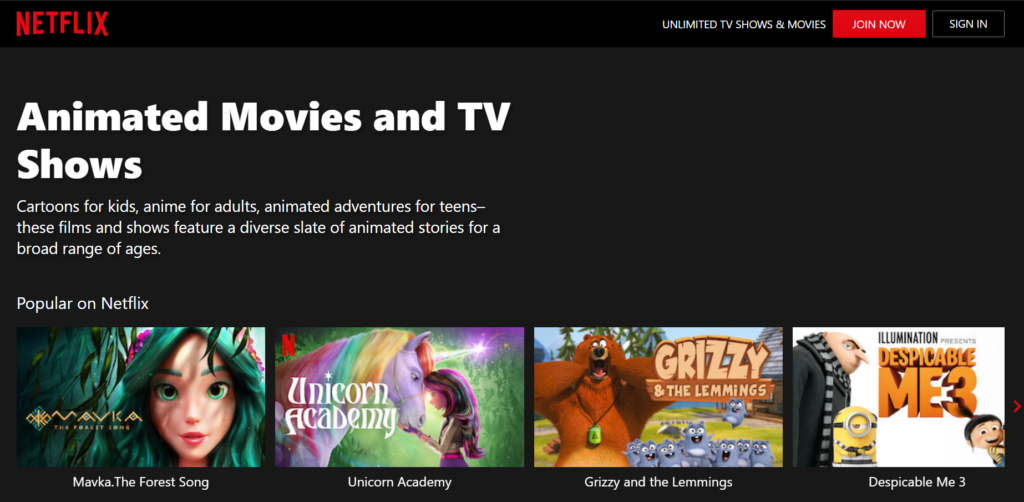The Future of Animation: Emerging Tech Trends
The computer animation industry is growing fast. It’s not just for cartoons on TV anymore. Now, we see animation in movies, video games, ads, and websites. With new tech, animators can do things that were hard to imagine before, making more realistic and creative animations.
As we gaze into the future of the animation industry, several tech trends stand out, promising to shape the creation, distribution, and consumption of animated works.
Overview of the Animation Industry
Animation industry is all about making drawings or models look like they’re moving. It’s a great way to tell stories or show how things work. Animators are like magicians. They turn ideas into moving pictures that make us laugh, cry, or learn something new.
There are a few main types of animation we see a lot today:
- Traditional animation techniques. It is the old-school way, where artists draw each frame by hand. It’s a lot of work, but it has a classic look many people love.
- Computer animation. It is the most common type. Animators use software to create and move characters and scenes. It’s faster and allows for more complex scenes.
- 2D animation. Flat but fun, 2D animation is still famous for its simple and artistic style. It’s great for cartoons and explainer videos.
- 3D animation. This technology adds depth to the animation, making it look more like the real world. 3D animation used a lot in movies and video games.
- Virtual Reality (VR) and Augmented Reality (AR) animation. These are the new kids on the block. They let viewers step inside the animation and look around, making it a super realistic experience.
As the future of animation unfolds, we can expect to see even more amazing stuff, thanks to these trends and technologies. For creators and companies like Explain Ninja, it’s all about using these tools to make digital animations that stand out and get the message across in fun and engaging ways.
Significance Across Industries
Animation isn’t just for entertainment anymore. It’s impacting different industries, from marketing to healthcare. Let’s explore how various fields use animation.
Marketing
In the marketing world, animation is a game-changer. Companies use animated video content to grab people’s attention online and explain their products in a fun way. It’s a great tool because it can tell a story quickly and clearly, making complex ideas easy to understand. Plus, animated storytelling stand out more than regular ones, helping brands shine in the saturated market.
Education
Education
Education is getting a big boost from animation, too. Animations can make learning more exciting and easy to understand, especially when it comes to challenging subjects. Explainer videos can illustrate things impossible to see in a classroom, like entering a human cell or traveling back in time. Animation makes lessons more engaging and helps students remember what they learn for a longer time.
Healthcare
Healthcare is another area where animation is making a difference. Animated videos can explain medical procedures and health topics in a way that’s easy to get. They’re used in patient education, helping people understand their treatment better. They’re great for training healthcare workers and clearly showing complex medical concepts.
Gaming Industry
The gaming industry and animation go hand in hand. Today’s video games use a lot of animation to create fantastic worlds and characters that feel real. 3D animation, in particular, has taken gaming to a new level, making games more immersive.
Architecture and Engineering
Animation is also making waves in architecture and engineering. Architects use 3D animation to show what a building will look like before it’s built. It helps clients see the vision and make changes early on. In engineering, animated simulations can test how designs work in the real world, saving time and money.
In all these fields, animation is not just about looking good. It’s a powerful tool that helps explain, educate, and sell. As technology improves, we’ll see animation pop up in more industries, making things more transparent and exciting for everyone.
Key Trends Shaping the Animation Industry
The future of the animation industry is bright, with new trends and technologies taking the stage. Here are some of the key animation trends that are reshaping how animators create content and how we all enjoy it.
3D Animation
3D animation is set to become even more sophisticated and lifelike, pushing the boundaries of what’s possible in movies and virtual experiences. With design and graphics technology advancements, animators can create more detailed and realistic animations.
2D Animation (in Marketing)
2D animation remains a powerful tool in marketing, thanks to its simplicity and effectiveness in storytelling. Brands use 2D animated videos to explain their products or services clearly and concisely, making complex ideas easy to understand for their audience.
Hybrid Animation
Computer graphics, which mixes 2D and 3D animation, is becoming more popular. This trend allows creators to blend the best of both worlds, making animations more dynamic and engaging. It’s a great way for animators to experiment and push the boundaries of traditional animation.
Vertical Animation Videos
With more people watching videos on their mobile devices, vertical videos are rising. Animation studios are now designing content specifically for mobile viewers, ensuring their creations look great on any device. This trend is significant for marketing, as brands want to catch the eye of consumers scrolling through their social media feeds.
Augmented Reality (AR)/Virtual Reality (VR) Animation
Interactive and immersive experiences are becoming a significant trend in animation, primarily driven by advancements in augmented and virtual reality technologies. These tools allow creators to develop content that viewers can watch and interact with, offering personalized and engaging experiences. As this trend continues, we’ll see more animated content designed specifically for augmented and virtual reality platforms, transforming passive viewers into active participants.
Depth Sensors
Depth sensors are making more lifelike characters by accurately capturing movements and expressions. This technology is beneficial in creating realistic and environments, enhancing the viewer’s experience by adding a new layer of realism to animated content.
Kinetic Typography
Kinetic typography, the art of moving text, is becoming more popular in the animation. It’s a great way to grab attention and convey messages without sound, perfect for viewers who watch videos on mute. This trend is beneficial in social media marketing, where capturing viewer interest as fast as possible is critical.
Blockchain and NFT
Blockchain technology and NFTs (Non-Fungible Tokens) offer new ways in animation for creators to monetize their work and protect their copyrights, providing a secure platform for selling and owning digital art and animation.
Interactive Storytelling
Interactive storytelling is evolving, with animation becoming more than just linear narratives. Viewers can now influence the story’s direction, making each experience unique. This trend is expanding the possibilities for storytelling in animation, opening up new opportunities for animation studios to engage with their audience.
AI-Driven Tools
Artificial intelligence (AI) is playing an increasingly central role in the animation process, automating repetitive tasks that were once time-consuming and allowing animators to focus more on the creative aspects of their work. From rendering to character animation, AI-driven animation tools are becoming more sophisticated, enabling the creation of more complex animated worlds with less manual effort. Artificial intelligence (AI) speeds up the production process and opens up new possibilities for creativity and innovation in the animation studios.
Streaming Services
Streaming services are expanding their horizons, investing heavily in original animated content to captivate diverse audiences. Platforms like Netflix and Amazon Prime Video are becoming key players in the global animation industry, providing a platform for established and emerging creators to showcase their work. This animation trend will likely continue, with streaming services becoming a significant source of innovative animated content.

These trends are driving the future of the animation industry, offering exciting opportunities for creators and a richer, more immersive experience for viewers.
Challenges for Animators and Creators
In the ever-evolving landscape of the computer animation industry, animators and creators face a unique set of challenges and opportunities. Navigating these can dictate the future of animation and the success of those who contribute to its progress.
- Staying ahead in a competitive market. The animation industry is more competitive than ever. With numerous platforms for content distribution and an increasing number of creators entering the field, standing out requires talent and innovation. Animators must continually refine their skills and embrace new tools and animation trends to captivate audiences.
- Leveraging new technologies. The rapid advancement of technology presents both a challenge and an opportunity. Keeping up with the latest software and animation techniques, like virtual reality, augmented reality, and depth sensors, can be daunting. However, those who can master these tools push the boundaries of what’s possible in animation, creating more immersive and interactive content.
- Adapting to changing viewer preferences. As the audience for animated content grows and diversifies, so do their preferences. Animators and creators must be adept at understanding these shifts and flexible enough to adapt their animation production process to meet evolving expectations. It includes creating content that resonates with adult audiences and exploring new animation formats like vertical videos for mobile consumption.
- Balancing creativity with commercial demands. While animation is an art form, it’s also a business. Animators need to balance their creative vision with the commercial goals of the projects they work on, especially in advertising and marketing. It can sometimes limit creative freedom but also opens doors to innovative solutions that meet business objectives.
- Navigating intellectual property issues. With the rise of digital platforms and technologies like blockchain and NFTs, protecting and monetizing intellectual property has become both a challenge and an opportunity. Animators must be savvy about copyright laws and the new possibilities for securing their work and ensuring fair compensation.
- Engaging with interactive and multiplatform storytelling. The trend toward interactive storytelling and content that spans multiple platforms offers exciting opportunities for animators to engage audiences in new ways. However, it also requires a broader skill set, including understanding user experience design and cross-platform content integration.
For animators and creators, the future of the animation industry is full of potential. By embracing new technologies, adapting to changing market dynamics, and leveraging their unique creative talents, they can overcome challenges and create stunning visuals, shaping the future of animation in the process.
Explain Ninja Expertise in Animation Video Production
Explain Ninja specializes in crafting animated videos for business purposes, combining our passion for storytelling with the latest animation technology. Our expertise lies in understanding a brand’s core message and transforming it into engaging and informative animated content that resonates with audiences.
We recognize that each business is unique, with its challenges and goals. That’s why we offer customized animated video solutions designed to meet the specific needs of our clients. We create stunning visuals to introduce new products, explain complex services, and enhance your online presence, meeting your business goals.
Our unmatched expertise in producing animations for business ensures you stand out in a crowded marketplace. Contact us if you want to make an impact. With Explain Ninja, you can trust that your animated video will be a powerful tool in your marketing campaign.
Conclusion
As we look toward, it’s clear that animation is set to play an increasingly pivotal role in storytelling, marketing, and entertainment. The future of animation industry holds the promise of breaking traditional boundaries, with a blend of live action animation and storytelling techniques.
The question of “What is the future of animation?” is answered by the ongoing technological advancements and the creative ambitions of animators and creators worldwide. We are witnessing a shift towards more immersive experiences, where animated content enhances live action footage, bringing a new depth and dimension to storytelling.
Animated elements will become an integral part of our digital and visual culture, shaping how we consume content, learn new concepts, and connect with the stories that matter most to us.


